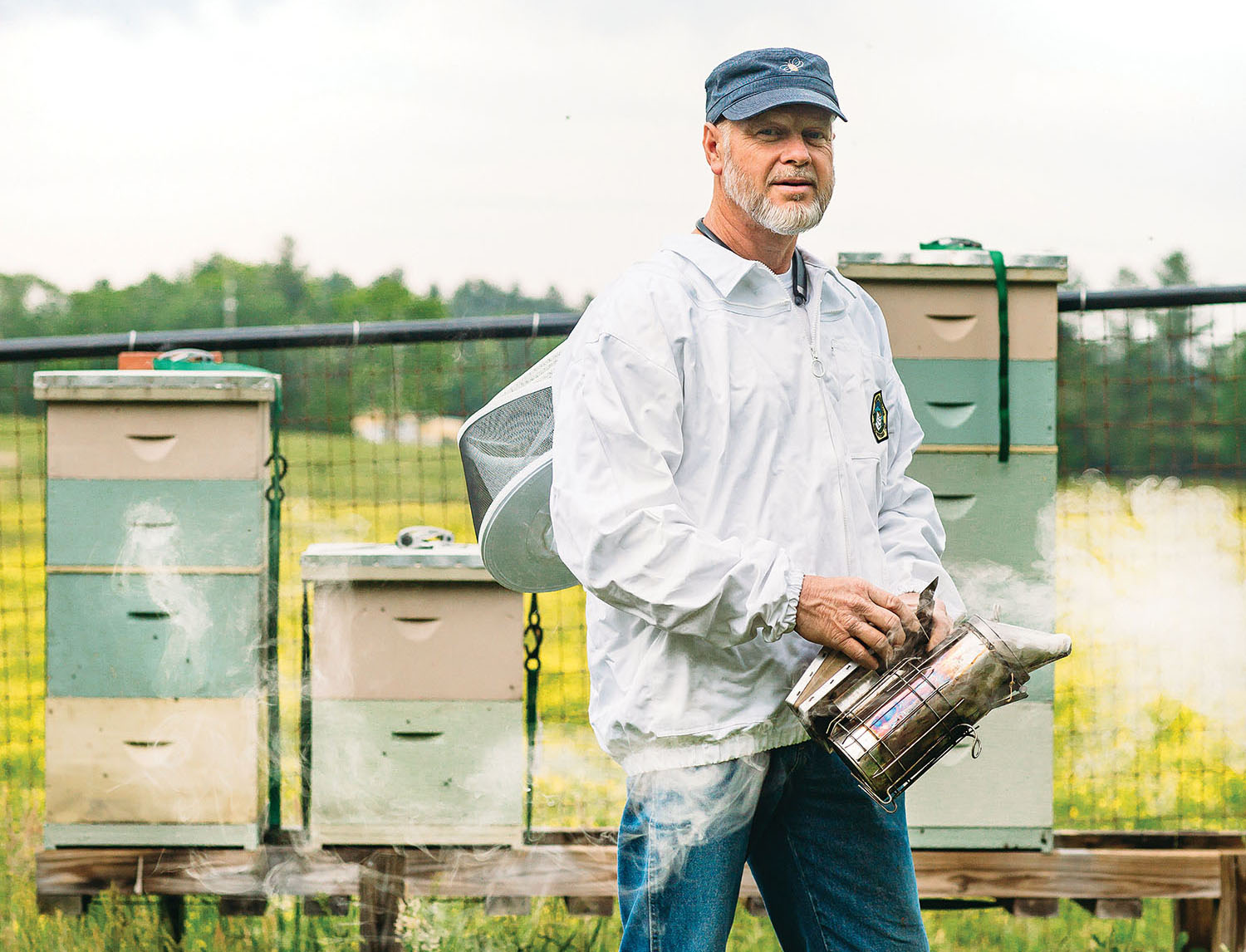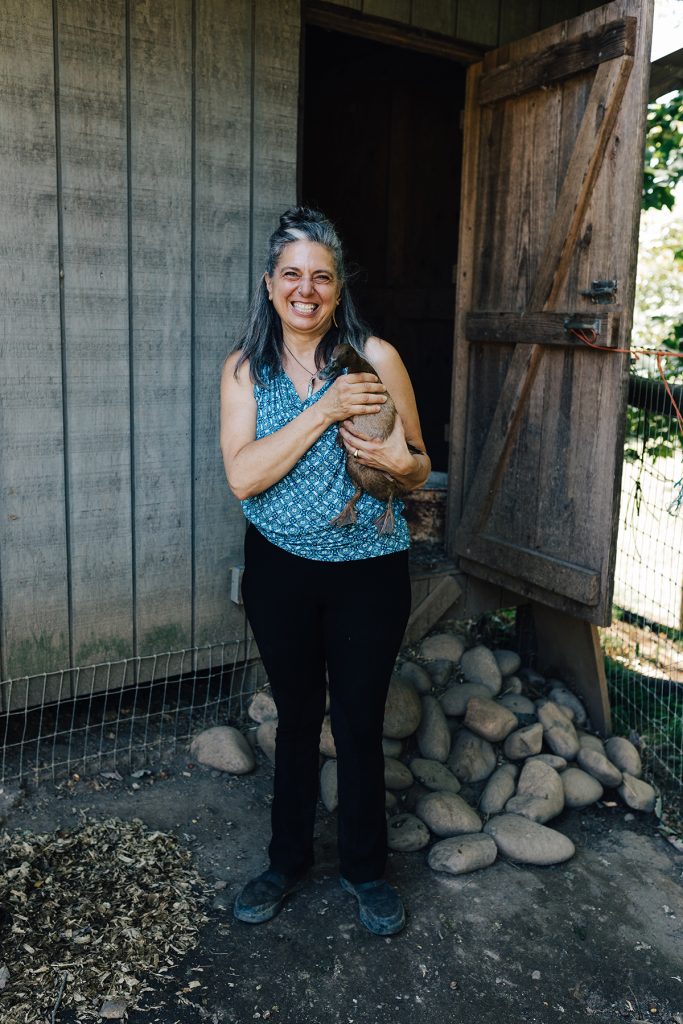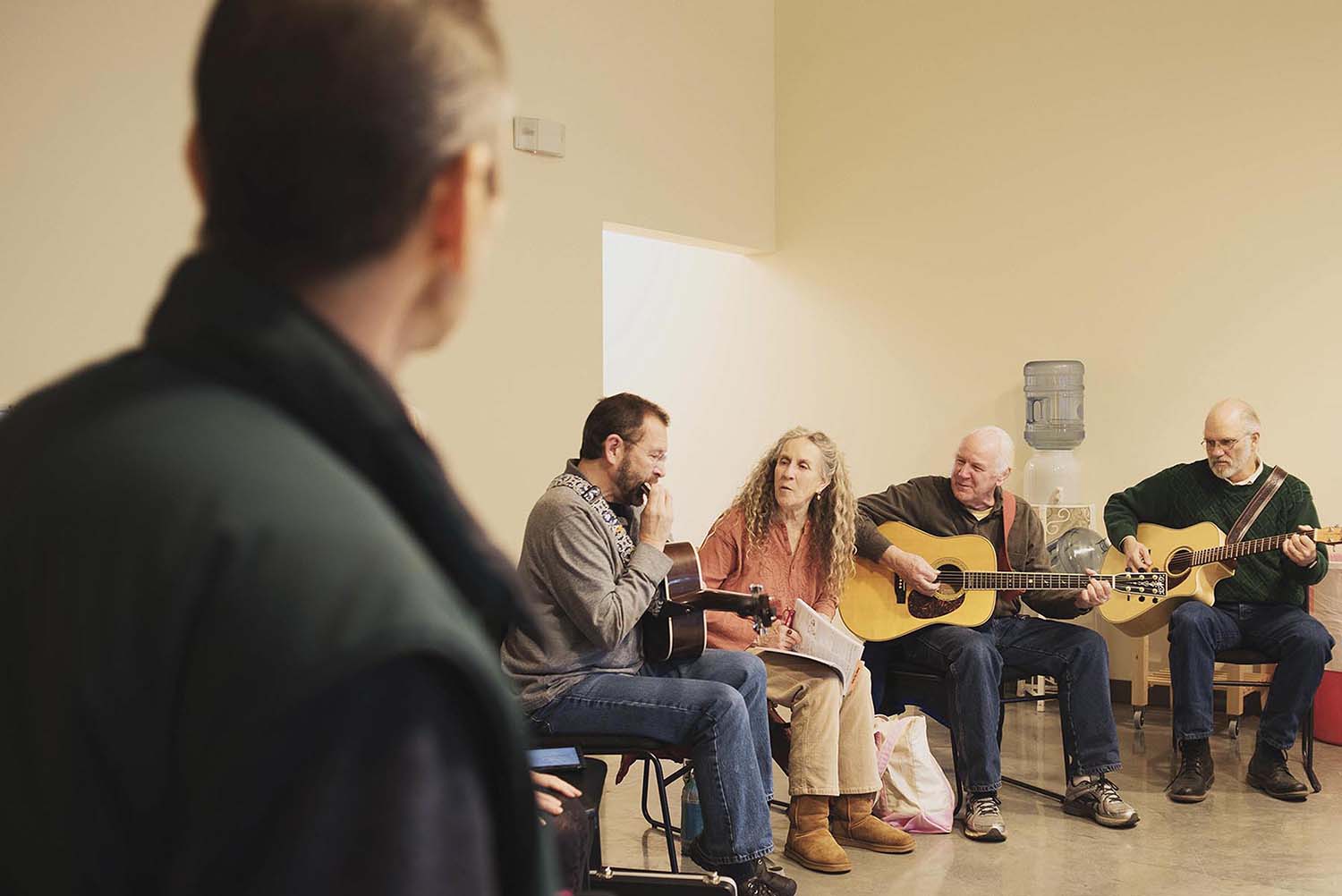
David Stallings, president of the Henderson County Beekeepers Association, points out that cartoon hives look nothing like the real thing. Photo by Tim Robison
At 5:30pm on a Wednesday, most Hendersonville residents are fighting traffic or rustling up dinner. But just a few miles outside city limits in Mud Creek, David Stallings is tending to 3.5 million honeybees.
“Sure, I can work and talk,” he tells Bold Life, only a veil between him and a buzzing cloud. Many evenings, he leaves the nylon beekeeper suit at home, relying on instinct instead. If the weather is damp, for instance, he can sense the hive’s frustration. So, he moves even slower to avoid a swarm.
Fortunately, today is hot. “They are docile and very calm,” Stallings says reassuringly.
Six years ago, he picked up beekeeping to bring more pollinators to his “kitchen garden” — a small holding lush with squash, peppers, beans, and leafy greens. He is now president of the Henderson County Beekeepers Association.
Is it hard to start your own apiary (bee yard)?
It’s not hard, actually. We just recommend that people start with two colonies; that way you can compare them. It might cost $1,200 for the equipment, bees, and so on.
How much honey does a single hive produce?
If the hive has a big population of foragers, or the working force that goes out and gets the nectar, you’ll get a good crop. They can produce 100 pounds of honey for you to take home. But you have to keep in mind that they eat honey to keep themselves warm through the winter. It’s like gasoline for a car. Without it, they’ll starve to death.
Are there any bee myths you would like to dispel?
In preschool or kindergarten drawings, you see bees living in a spiraling hornet’s nest. It looks like something Winnie the Pooh might get his head caught in. That’s not the way bees form hives.
Speaking of Winnie the Pooh, are bears an actual nuisance?
They are. Around here, we put up bear fences. I started my first apiary on a rooftop because of the bears. But they aren’t after the honey — that’s just the dessert. What they’re really after are the baby bees still in the pupae stage. That’s just pure protein.
On a typical day, how many times do you get stung?
It depends on the colony’s temperament. Each colony has its own personality and you can have some really cranky girls. It depends on the weather, too. They like clear, sunny days. So, if it’s windy or rainy, you might get stung five or six times. And let me tell you, it doesn’t feel good. It’s like being touched by a struck match head. It burns intensely for a few minutes. Other days, like today, I won’t get stung once.
June 19-25 is National Pollinators Week. The Henderson County Beekeepers Association will host Introduction to Beekeeping, a free class covering topics like bee biology and equipment costs, at the Hendersonville Community Co-Op (60 South Charleston Lane) on Saturday, June 17, from 9:30am-11am. To register, call 828-693-0505, ext. 102. www.hendersonville.coop.


